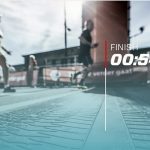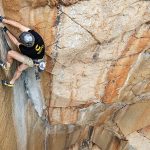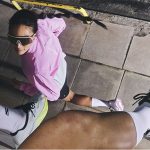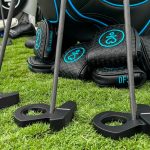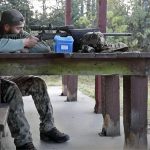Asics America Group (AAG) reported net sales decreased 11.3 percent for the first nine months of 2016, with Asics America Corporation (U.S. only) showing a 13.1-percent decrease in net sales.
Across all Asics digital channels, there was a 23-percent increase in the direct-to-consumer retail channels, while e-commerce saw a 94.3-percent increase over the same period last year.
AAG noted that with national sporting goods retail chains closing, consumers have shifted their focus to digital platforms.
The company also stated that following this year’s appointments of Vice President of Regional Sales Andrew Richard and Vice President of Marketing Roeya Vaughan, the brand is continuing to build a strong leadership team to ensure Asics Americas remains adaptable to the changing marketplace and continues to build off the brand’s legacy of being a true sport performance brand. The state of the sports performance industry is ever-changing and the effects are still prevalent in the marketplace, the firm added.
“We remain focused on strengthening and growing the Asics brand in the Americas region, keeping our customers as our top priority,” said Gene McCarthy, Asics Americas president and CEO, in a statement. “We are ensuring our customers not only receive top of the line technology in our footwear and apparel, but also in our digital platforms, such as Runkeeper. As a brand, we are staying true to who we are and are dedicated to providing product for athletes of all skill levels.”
On a positive note, Asics Tiger brand grew 1.6 percent for AAG.
Asics in July launched the new DynaFlyte footwear model, designed with a lightweight ride and effective conditioning. DynaFlyte sales were strong through the end of September, serving as Asics’ major product launch in the quarter. The 23rd iteration of the Gel-Kayano was also introduced with enhanced stability and reduced weight. Self Magazine also named the GEL-Nimbus 18 one of its “Editors’ Picks.”
Also this quarter, Asics released the 2016 Accelerate Hope Collection to support cancer research and awareness. The collection includes three distinct lines of Asics footwear products that are representative of three cancer research and awareness organizations: Cookies for Kids’ Cancer, which raises funds to support pediatric cancer research; Right Action for Women, which provides assistance to women who are at risk for breast cancer and do not have the means to cover the costs associated with the screenings; and the Prostate Cancer Foundation, which funds prostate cancer research around the world.
Athlete highlights from this quarter included Asics elite athlete Gwen Jorgensen, two-time World Triathlon Champion, who announced her marathon debut at the TCS New York City Marathon on the heels of winning a gold medal in the women’s triathlon at the Rio 2016 Olympic Games in August. Additional Asics elite athletes who competed in the Rio 2016 Olympic Games included Jordan Burroughs, Adeline Gray, Kerri Walsh Jennings and Jarrion Lawson.
Companywide, Asics Corp. reported revenues slid 7.2 percent in the nine months ended September 30, to ¥312.5 billion.
Domestic net sales eased 0.1 percent to ¥80.2 billion, mainly due to weak sales of sportswear and equipment, despite strong sales of running shoes, Onitsuka Tiger shoes and Asics Tiger shoes. Overseas sales decreased 9.4 percent to ¥232,314 million, due to weak sales in the U.S. and the effect of the strong yen, despite strong sales of running shoes in Oceania/Southeast and South Asia and East Asia and steady sales in Europe. Asics Tiger shoes also performed favorably, mainly in the European region.
Gross profit decreased 4.5 percent to ¥140 billion due partly to the effect of the foreign exchange rates. Selling, general and administrative expenses decreased 2.7 percent to ¥110.4 billion, mainly due to a decrease in advertising expenses and the effect of foreign exchange rates. As a result, operating income decreased 10.8 percent to ¥29.5 billion. Ordinary income decreased 2.1 percent to ¥26,792 million, mainly due to a decrease in exchange loss. Profit attributable to owners of the parent increased 22.9 percent to ¥18.68 billion, mainly due to a temporary loss caused by the structural reforms to the domestic business, which was posted in the corresponding period of the previous fiscal year.
By region in the nine months:
- Japanese region: Net sales decreased 3.6 percent to ¥93.9 billion, due to the decrease in intermediary trade that is conducted internally, despite strong sales of running shoes, Onitsuka Tiger shoes and Asics Tiger shoes. As part of structural reforms to the domestic business, the group promoted minimizing and withdrawing the lower profitable products and a lean organization structure. As a result, segment income increased 109.9 percent to ¥7.39 billion.
- American region: Sales decreased 19.2 percent (a decrease of 11.3 percent using the previous fiscal year’s foreign exchange rate) to ¥87.2 billion, due to the effect of changes in the retail market and intensifying competition in the U.S., in addition to the effect of foreign exchange rates. Segment income decreased 71.5 percent (a decrease of 68.7 percent using the previous fiscal year’s foreign exchange rate) to ¥1.72 billion, mainly due to the recording of allowance for doubtful receivables, despite efforts to reduce advertising expenses and other expenses.
- European region: Sales decreased 6.6 percent (an increase of 3.7 percent using the previous fiscal year’s foreign exchange rate) to ¥84.96 billion, due to the effect of foreign exchange rates, despite continuing steady sales of running shoes and the strong sales of Asics Tiger shoes. Segment income decreased 0.6 percent (an increase of 10.4 percent using the previous fiscal year’s foreign exchange rate) to ¥9.75 million, mainly due to an improved gross profit margin.
- Oceanian/Southeast and South Asian regions: Sales increased 10.7 percent (an increase of 24.9 percent using the previous fiscal year’s foreign exchange rate) to ¥18.3 billion, due to the continuing strong sales of running shoes. Segment income increased 11.6 percent (an increase of 26.1 percent using the previous fiscal year’s foreign exchange rate) to ¥3.17 billion due to the effect of increased sales.
- East Asian region: Sales increased 5.2 percent (an increase of 20.5 percent using the previous fiscal year’s foreign exchange rate) to ¥34.1 billion, due to the continuing strong sales of running shoes, Onitsuka Tiger shoes and others, particularly at the subsidiary in China. Moreover, segment income increased 16.4 percent (an increase of 33.9 percent using the previous fiscal year’s foreign exchange rate) to ¥6.05 billion.
- Other business: Sales decreased 15.1 percent (a decrease of 6 percent using the previous fiscal year’s foreign exchange rate) to ¥7.52 billion, due to some weaker performances such as outdoor wear under the Haglöfs brand and the effect of foreign exchange rates, despite strong sales of outdoor shoes under the Haglöfs brand. Segment loss was ¥157 million.
Looking ahead, Asics maintained its guidance for the year. It expects sales to decline 6 percent to ¥403 billion. Operating profits are expected to slump 16.2 percent to ¥23 billion while net earnings are projected to advance 31.9 percent to ¥13.5 billion.
Photo courtesy Asics


